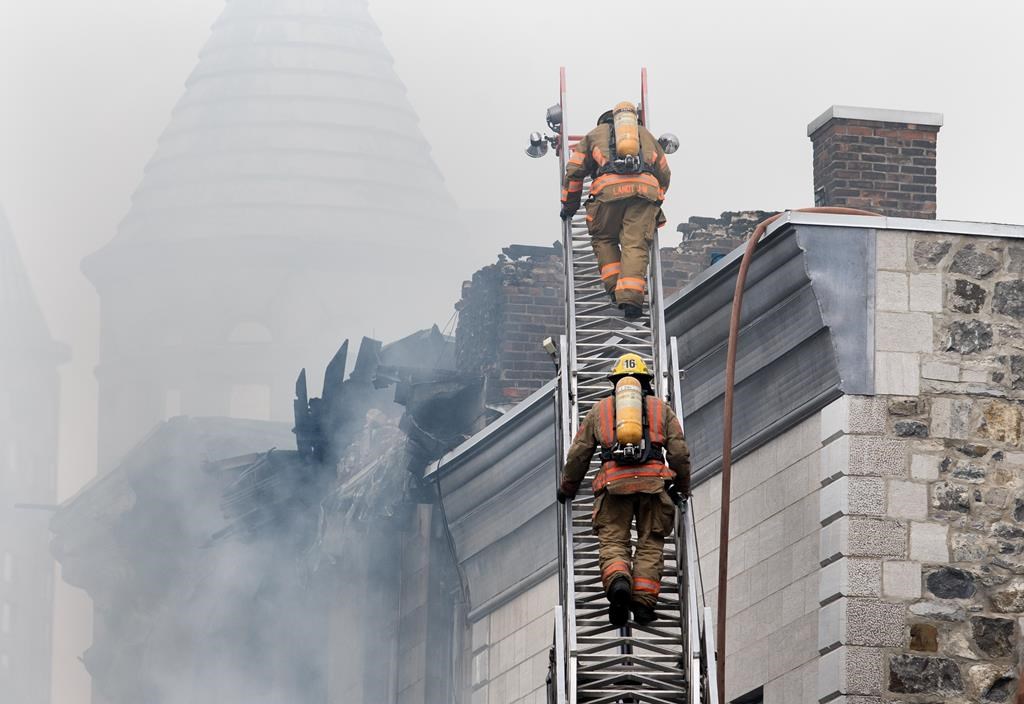Quebec adds six cancers to list of illnesses linked to firefighters

Posted April 11, 2025 3:06 pm.
Last Updated April 11, 2025 3:10 pm.
Quebec is adding six cancers as illnesses related to the firefighter profession. Applying this presumption will allow firefighters diagnosed with cancer to avoid having to prove a causal relationship between the illness and their work. This will allow them to receive compensation much more quickly and simplify the administrative burden.
Labour Minister Jean Boulet made the announcement Friday in Trois-Rivières. The cancers added to the list are colorectal cancer, leukemia, and cancers of the brain, testicles, esophagus, and breast.
This brings the total number of cancers recognized as occupational diseases related to the work of firefighters to 16. The others that were already included are lung cancer, kidney cancer, pulmonary and non-pulmonary mesothelioma, bladder cancer, larynx cancer, skin cancer, prostate cancer, multiple myeloma and non-Hodgkin’s lymphoma.
The Commission des normes, de l’équité, de la santé et de la sécurité du travail (CNESST) estimates that approximately 50 people could have their occupational illness recognized and be compensated in the years following the entry into force of the amendments.
“Those who were diagnosed before the regulation came into force—it will be published in the Official Gazette next week and will come into effect 15 days after its publication—and if someone files a claim now, it will be analyzed based on the new presumed cancers announced today,” Boulet said in an interview.
The Montreal Firefighters Association and the Regroupement des associations des pompiers du Québec (RAPQ) welcome the news. “On behalf of all firefighters in the province, we are very grateful,” commented Chris Ross, president of both organizations.
“An occupational disease is never easy, and having to fight with the CNESST afterwards isn’t easy. To have recognition with presumption, something that exists across the country, is definitely something we’ve been waiting for a long time.”
Cancer is the leading cause of death among firefighters. According to Health Canada, they have a 14 per cent higher risk of cancer death than the general population.
In the course of their duties, firefighters are often exposed to smoke from fires as well as toxic chemicals released by burning materials and fire-extinguishing foams.
“These are people who put their health at risk every day as they work to protect others,” Boulet said. “There are fires, structural collapses, toxic substances, materials deposited on combat clothing, and inhalation risks.”
There is a disparity between Canadian provinces in the number of cancers recognized as occupational diseases related to firefighter work. Saskatchewan leads the country with 22 recognized cancers.
Boulet does not rule out including other cancers in the future. “This is an important step forward, but it’s not over yet. I created a scientific committee on occupational diseases, and one of the priorities I set was to look into other occupational cancers linked to the work of firefighters, and I anticipate expanding our list in the coming years,” he said.
—The Canadian Press’s health content is funded through a partnership with the Canadian Medical Association. Editorial choices are solely those of The Canadian Press.
–This report by La Presse Canadienne was translated by CityNews








